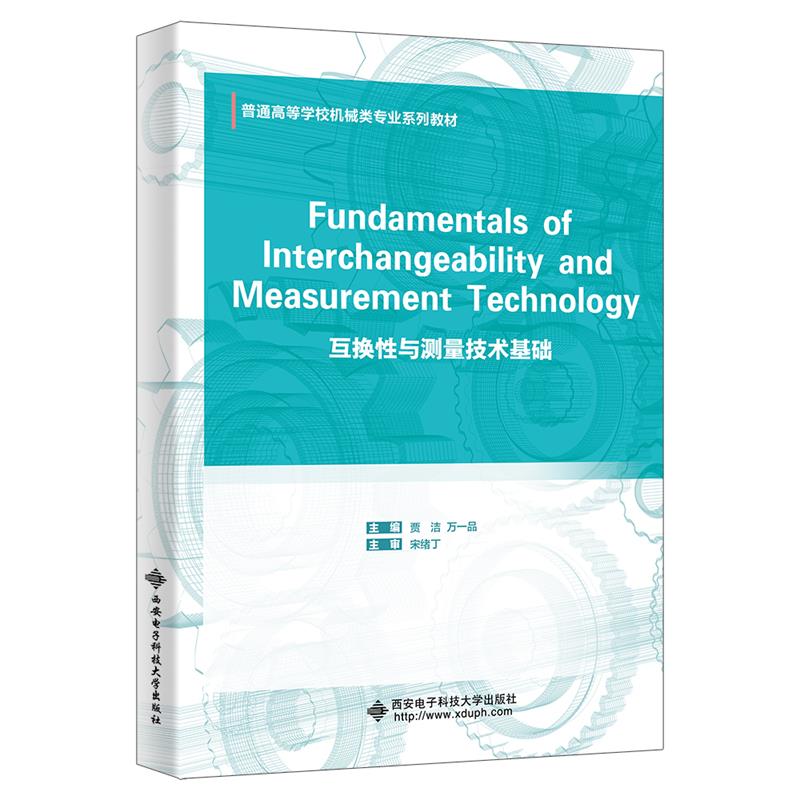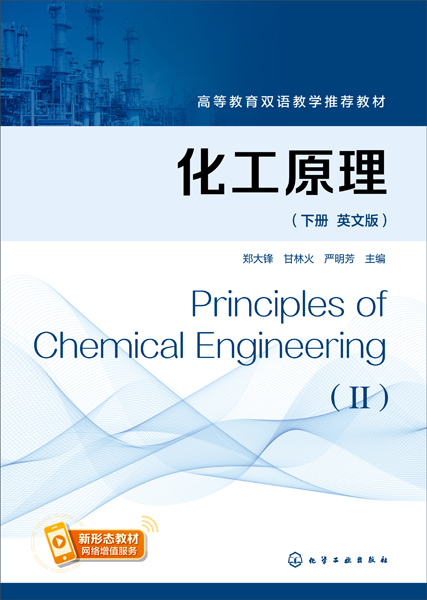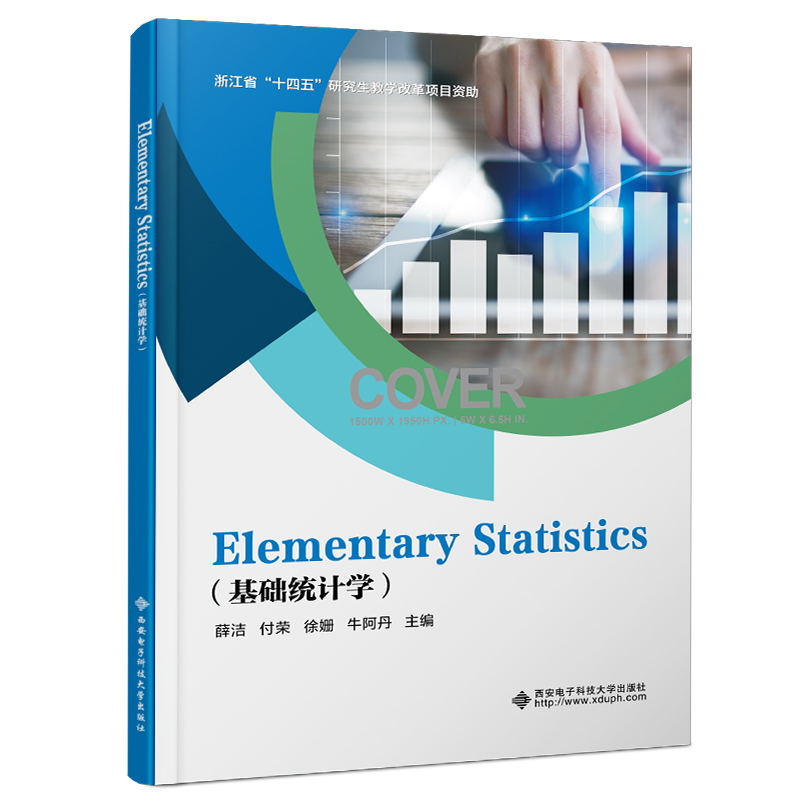互换性与测量技术基础(英文) / 普通高等学校机械类专业系列教材
定价:¥35.00
作者: 贾洁
出版时间:2024-05
最新印次日期:2024-6
出版社:西安电子科技大学出版社
- 西安电子科技大学出版社
- 9787560671222
- 1-1
- 531091
- 61251515-5
- 16开
- 2024-05
- 工学
- 机械类
- 机械、仪表工艺
- 本科
目录
Chapter 1 Introduction 1
1.1 Overview 2
1.2 Basic Concepts 3
1.2.1 Error and Tolerance 3
1.2.2 Interchangeability 4
1.2.3 Standardization and Series of Preferred Numbers 5
1.2.4 Precision Measurement 9
1.3 Purpose of This Course 10
Summary 10
Exercise 1 11
Chapter 2 Tolerance and Fit 12
2.1 Overview 13
2.2 Basic Terms and Definitions 13
2.2.1 Size of Hole and Shaft 13
2.2.2 Deviation and Tolerance 15
2.2.3 Fit Types and Basic System of Fit 19
2.3 Standards of Tolerances and Fits 24
2.3.1 Standard Tolerance Series 24
2.3.2 Fundamental Deviation Series 28
2.3.3 Marking Form for Part Illustration 38
2.3.4 Standardization of Tolerance Interval and Fit 39
2.3.5 General Tolerance 41
2.4 Selection of Tolerance and Fit 42
2.4.1 Selection of Datum System 43
2.4.2 Selection of Tolerance Grade 44
2.4.3 Selection of Fit Type 46
2.5 Case Analysis of Tolerance and Fit 50
2.5.1 Calculation Cases 50
2.5.2 Analogy Cases 54
2.5.3 Marking of Illustration Cases 60
2.6 Measurement of Part Size 61
2.6.1 Length Size Measurement 61
2.6.2 Shaft Diameter Size Measurement 63
2.6.3 Hole Diameter Size Measurement 64
2.6.4 Smooth Limit Gauge 66
Summary 68
Exercise 2 68
Chapter 3 Geometric Tolerances 71
3.1 Overview 72
3.2 Basic Terms and Definitions 72
3.2.1 Geometric Features 72
3.2.2 Characteristics and Symbols of Geometric Tolerances 73
3.2.3 Marking of Geometric Tolerances 74
3.2.4 Geometric Tolerance Zone 79
3.3 Geometric Tolerance Items 80
3.3.1 Form Tolerances 80
3.3.2 Orientation Tolerances 85
3.3.3 Location Tolerances 87
3.3.4 Run-out Tolerances 90
3.4 Tolerance Principle 93
3.4.1 Basic Terms and Definitions 94
3.4.2 Independency Principle 98
3.4.3 Envelope Requirement 98
3.4.4 Maximum Material Requirement 100
3.4.5 Least Material Requirement 106
3.4.6 Reciprocity Requirement 107
3.5 Designing of Geometric Accuracy 108
3.5.1 Selection of Geometric Tolerance Features 109
3.5.2 Selection of Geometric Tolerance Values 110
3.5.3 Selection of Datum 118
3.5.4 Selection of Tolerance Principle or Tolerance Requirements 120
3.6 Case Analysis of Geometric Tolerances 121
3.6.1 Case Design 121
3.6.2 Case Study 125
3.6.3 Illustration of Marking Cases 127
3.6.4 Tolerance Principle Cases 129
3.7 Measurement of Geometric Error 130
3.7.1 Form Error Measurement 130
3.7.2 Measurements of Orientation Error and Location Error 132
3.7.3 Run-out Error Measurement 133
Summary 133
Exercise 3 134
Chapter 4 Surface Roughness 138
4.1 Basic Concept of Surface Roughness 139
4.1.1 Definition of Surface Roughness 139
4.1.2 Influence of Surface Roughness 139
4.2 Evaluation of Surface Roughness 141
4.2.1 Basic Terms 141
4.2.2 Evaluation Parameters 142
4.3 Parameter Values of Surface Roughness and Its Selection 143
4.3.1 Parameter Values of Surface Roughness 143
4.3.2 Selection of Surface Roughness 144
4.4 Surface Roughness Symbol and Its Marking 146
4.4.1 Basic Symbols of Surface Roughness 146
4.4.2 Marking of Surface Roughness Symbol 146
4.4.3 Examples of Surface Roughness Marking 149
4.4.4 Marking of Location and Direction of Surface Roughness Symbol 149
4.5 Measurement of Surface Roughness 152
Summary 153
Exercise 4 153
Chapter 5 Fundamentals of Geometric Quantity Measurement 155
5.1 Introduction 156
5.1.1 Concept of Measurement and Inspection 156
5.1.2 Measurement Process 156
5.2 Measurement Standards 157
5.2.1 Measurement Standards of Length and Angle 157
5.2.2 Dissemination System of Length and Angle 157
5.2.3 Gauge Blocks and Their Applications 158
5.3 Metrological Equipment and Measurement Methods 159
5.3.1 Metrological Equipment 159
5.3.2 Measurement Methods 160
5.4 Measurement Error and Processing Method of Data Error 162
5.4.1 Classification of Measurement Error 162
5.4.2 Processing Method of Data Error 163
5.5 Case Analysis of Measurement Error 167
Summary 169
Exercise 5 169
Chapter 6 Tolerances and Fits for Typical Parts 171
6.1 Involute Cylindrical Gear 172
6.1.1 Gear Accuracy Evaluation 172
6.1.2 Gear Accuracy Grades 175
6.1.3 Accuracies of Gear Blank and Gear Pairs 179
6.2 Rolling Bearing 180
6.2.1 Rolling Bearing Tolerance 180
6.2.2 Fit of Rolling Bearing 183
6.3 Single Key and Spline 185
6.3.1 Tolerance of Single Key Connection 185
6.3.2 Tolerance of Spline Connection 187
6.4 Thread 190
6.4.1 Common Thread Connection 191
6.4.2 Tolerance of Common Thread 193
Summary 195
Exercise 6 195
References 197
1.1 Overview 2
1.2 Basic Concepts 3
1.2.1 Error and Tolerance 3
1.2.2 Interchangeability 4
1.2.3 Standardization and Series of Preferred Numbers 5
1.2.4 Precision Measurement 9
1.3 Purpose of This Course 10
Summary 10
Exercise 1 11
Chapter 2 Tolerance and Fit 12
2.1 Overview 13
2.2 Basic Terms and Definitions 13
2.2.1 Size of Hole and Shaft 13
2.2.2 Deviation and Tolerance 15
2.2.3 Fit Types and Basic System of Fit 19
2.3 Standards of Tolerances and Fits 24
2.3.1 Standard Tolerance Series 24
2.3.2 Fundamental Deviation Series 28
2.3.3 Marking Form for Part Illustration 38
2.3.4 Standardization of Tolerance Interval and Fit 39
2.3.5 General Tolerance 41
2.4 Selection of Tolerance and Fit 42
2.4.1 Selection of Datum System 43
2.4.2 Selection of Tolerance Grade 44
2.4.3 Selection of Fit Type 46
2.5 Case Analysis of Tolerance and Fit 50
2.5.1 Calculation Cases 50
2.5.2 Analogy Cases 54
2.5.3 Marking of Illustration Cases 60
2.6 Measurement of Part Size 61
2.6.1 Length Size Measurement 61
2.6.2 Shaft Diameter Size Measurement 63
2.6.3 Hole Diameter Size Measurement 64
2.6.4 Smooth Limit Gauge 66
Summary 68
Exercise 2 68
Chapter 3 Geometric Tolerances 71
3.1 Overview 72
3.2 Basic Terms and Definitions 72
3.2.1 Geometric Features 72
3.2.2 Characteristics and Symbols of Geometric Tolerances 73
3.2.3 Marking of Geometric Tolerances 74
3.2.4 Geometric Tolerance Zone 79
3.3 Geometric Tolerance Items 80
3.3.1 Form Tolerances 80
3.3.2 Orientation Tolerances 85
3.3.3 Location Tolerances 87
3.3.4 Run-out Tolerances 90
3.4 Tolerance Principle 93
3.4.1 Basic Terms and Definitions 94
3.4.2 Independency Principle 98
3.4.3 Envelope Requirement 98
3.4.4 Maximum Material Requirement 100
3.4.5 Least Material Requirement 106
3.4.6 Reciprocity Requirement 107
3.5 Designing of Geometric Accuracy 108
3.5.1 Selection of Geometric Tolerance Features 109
3.5.2 Selection of Geometric Tolerance Values 110
3.5.3 Selection of Datum 118
3.5.4 Selection of Tolerance Principle or Tolerance Requirements 120
3.6 Case Analysis of Geometric Tolerances 121
3.6.1 Case Design 121
3.6.2 Case Study 125
3.6.3 Illustration of Marking Cases 127
3.6.4 Tolerance Principle Cases 129
3.7 Measurement of Geometric Error 130
3.7.1 Form Error Measurement 130
3.7.2 Measurements of Orientation Error and Location Error 132
3.7.3 Run-out Error Measurement 133
Summary 133
Exercise 3 134
Chapter 4 Surface Roughness 138
4.1 Basic Concept of Surface Roughness 139
4.1.1 Definition of Surface Roughness 139
4.1.2 Influence of Surface Roughness 139
4.2 Evaluation of Surface Roughness 141
4.2.1 Basic Terms 141
4.2.2 Evaluation Parameters 142
4.3 Parameter Values of Surface Roughness and Its Selection 143
4.3.1 Parameter Values of Surface Roughness 143
4.3.2 Selection of Surface Roughness 144
4.4 Surface Roughness Symbol and Its Marking 146
4.4.1 Basic Symbols of Surface Roughness 146
4.4.2 Marking of Surface Roughness Symbol 146
4.4.3 Examples of Surface Roughness Marking 149
4.4.4 Marking of Location and Direction of Surface Roughness Symbol 149
4.5 Measurement of Surface Roughness 152
Summary 153
Exercise 4 153
Chapter 5 Fundamentals of Geometric Quantity Measurement 155
5.1 Introduction 156
5.1.1 Concept of Measurement and Inspection 156
5.1.2 Measurement Process 156
5.2 Measurement Standards 157
5.2.1 Measurement Standards of Length and Angle 157
5.2.2 Dissemination System of Length and Angle 157
5.2.3 Gauge Blocks and Their Applications 158
5.3 Metrological Equipment and Measurement Methods 159
5.3.1 Metrological Equipment 159
5.3.2 Measurement Methods 160
5.4 Measurement Error and Processing Method of Data Error 162
5.4.1 Classification of Measurement Error 162
5.4.2 Processing Method of Data Error 163
5.5 Case Analysis of Measurement Error 167
Summary 169
Exercise 5 169
Chapter 6 Tolerances and Fits for Typical Parts 171
6.1 Involute Cylindrical Gear 172
6.1.1 Gear Accuracy Evaluation 172
6.1.2 Gear Accuracy Grades 175
6.1.3 Accuracies of Gear Blank and Gear Pairs 179
6.2 Rolling Bearing 180
6.2.1 Rolling Bearing Tolerance 180
6.2.2 Fit of Rolling Bearing 183
6.3 Single Key and Spline 185
6.3.1 Tolerance of Single Key Connection 185
6.3.2 Tolerance of Spline Connection 187
6.4 Thread 190
6.4.1 Common Thread Connection 191
6.4.2 Tolerance of Common Thread 193
Summary 195
Exercise 6 195
References 197










